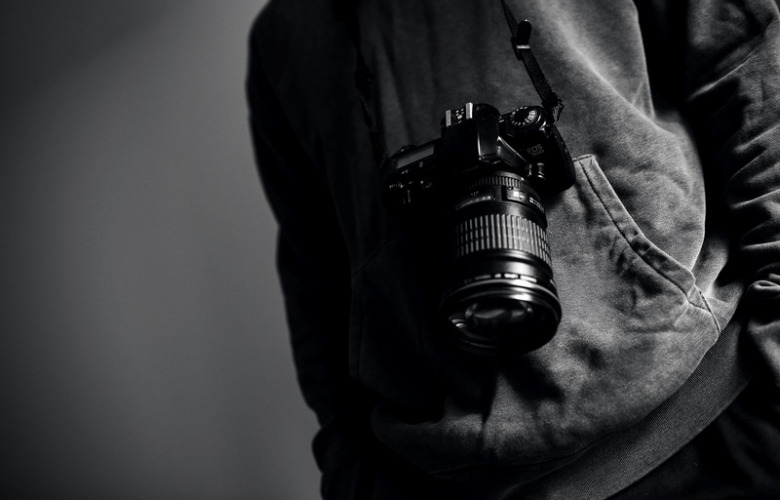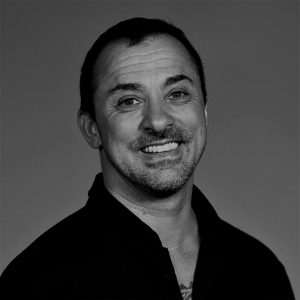
Over the years, as a photographer, writer, and stage manager, I either created something myself or I witnessed the creative process unfold at my place of work. Through the years, one thing became evident: Be it for small creative projects or multi-million dollar shows, the essence of the creative process remains the same. Creation is at the heart of everything we do. How we do it is our personal choice. Yet, in the end it is a dance of strategy intertwined with trial and error.
I still vividly remember my life as an art photographer… just before the era of analog photography gave way to digital photography.
Working towards exhibiting my work under a specific theme, I would come up with a basic idea and layout of what I wanted to create. Then, I would go out and start taking a lot of pictures.
I would approach the subject from every conceivable angle. Afterwards, I would spend most of my time in the darkroom.
I would develop every print countless times. Each time, the shades of gray would get more pronounced, the print would get more brilliant and more defined. Until, finally, after many hours of repetition and tweaking, it would feel just right.
Then, I would start putting together the sequence of pictures. Most of the time, what would look perfect in the beginning would not stand up to scrutiny anymore as the work matured.
Because my mindset evolved. My original idea grew. The story changed ever so slightly. Or a lot.
So, the process would continue and begin all over again. I would go back to base and collect more raw material. Following the growing, ever-sharpening vision in my mind, I would try to capture the right moments to express this vision through my photographs.
Be it in my photography or writing, my process consists of using all resources at my disposal to produce as much as I can during pre-production. In this way, I will have enough material to put the puzzle together just perfectly.
During my studies at the Zurich University of the Arts, I shared an apartment with a fellow photographer and good friend, Cat Tuong Nguyen. Cat Tuong was at the opposite end of the spectrum when it came to working on an art project.
Whereas I would run out the door immediately after deciding on a theme, to collect as much material as I could, Cat Tuong would sit at home for months and think.
I would bring my rough drafts home and hang them all over our walls during the creation period. To see them all next to each other and better decide what would work and what wouldn’t. Each time I’d come home, Cat Tuong would still sit in the living room and ponder.
He would develop his entire project in his head first, before expressing it through the lens of his camera. I would go through dozens of rolls of film and many hundred sheets of photographic paper to augment mine.
Just a few weeks before our exhibition, Cat Tuong would go out and take a specific series of pictures. His work would be profound and unique.
The end result of both our efforts would be the same: a compelling work of art. Our paths to get there couldn’t have been more different, however.
We were lucky to learn from the masters back then: Nan Goldin, Robert Frank, Andre Gelpke, Wolfgang Tillmans, to name only a few. And each of these photography legends would have yet another way in which they managed their own creative process.
One of my favorite photographers of all time, Lee Friedlander, was known for not being able to choose photos from his contact sheet immediately after taking photographs.
So Friedlander opted to not develop them at all. He would keep his exposed films in the fridge for up to ten years before he would develop them.
By then, he would have no emotional connection to the images taken so long ago. This enabled him to choose the best shots.
It is a question of resources as well. And a question of practicality. Had my friend Cat Tuong and I been creators of large-scale productions, mine would have cost millions, whereas Cat Tuong’s would have been incredibly low-budget.
No matter which of these two or many other creation methods you chose, somehow the heart of an artist knows when the boundaries are ripped wide open. When something truly amazing is starting to take shape.
And it’s not about ‘nice’. Nice is deadly, nice is boring. What you want is a moment of awe, a shifting of perception, goosebumps all over. Strong emotions either for or against, but definitely not pleasant neutral ground.
I am glad to be a creator as well as a facilitator. It gives me perspective.
As a stage manager, when I watch the ‘Creation’ of a show unfold in front of my eyes, I feel at home with the creative process. I don’t mind standing by and don’t mind endless repetitions because I know they are essential.
While I watch the director at work, I know what he or she is doing. I understand what he or she is trying to achieve.
At times, I find myself standing in the shadows, trying to get as close as I can without being in the way… and I have tears in my eyes because what I see is so invigorating. There is nothing more exciting than to watch an artist shape the world. Except maybe to be that artist and shape the world yourself. I am happy with both, being a creator as well as a witness and facilitator of ‘Creation’.
As a stage manager, or any theatre professional for that matter, ‘Creation’ presents a fantastic chance to grow with the show and understand what is happening.
Depending what our duties are, we might not get the opportunity to witness the entire process. But it doesn’t matter. Your understanding deepens with every moment you have the privilege to observe.
Thus, even between tasks and during my breaks, I grab every opportunity I can to watch in the wings, my eyes glued to the magical dance of lights, colors, shapes, sounds, and human beings. I absorb as much of it all as I can.
And invariably become more deeply connected with the artistic vision and the show we put on stage every single night.
On a personal level, being more connected with the creative process sustains me, and gives me strength for a long time in my role as facilitator and coordinator for each show, because it adds a deeper meaning to what I do.
ELĒKRŎN – The Fast and the Voltaic
Through The Looking Glass: An Introduction To Theatre


Liam Klenk was born in Central Europe and has since lived on four continents. Liam has always been engaged in creative pursuits, ranging from photography and graphic design, to writing short stories and poetry, to working in theatre and shows. In 2016, Liam published his first book and memoir, 'Paralian'.
Read Full Profile© 2021 TheatreArtLife. All rights reserved.

Thank you so much for reading, but you have now reached your free article limit for this month.
Our contributors are currently writing more articles for you to enjoy.
To keep reading, all you have to do is become a subscriber and then you can read unlimited articles anytime.
Your investment will help us continue to ignite connections across the globe in live entertainment and build this community for industry professionals.